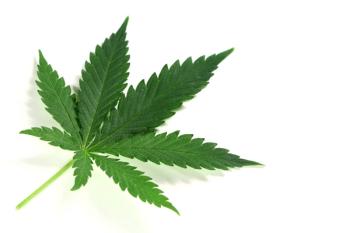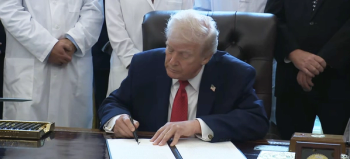
Cannabis Science and Technology
- July/August 2020
- Volume 3
- Issue 6
America’s Heartland Tackles Hemp Cultivation with Education

Marguerite Bolt discusses the Purdue Hemp Extension Program, hemp cultivation, community education efforts, and more.
The Midwest region of the US is known for its farmland, so it should come as no surprise that there has been keen interest in that area to grow hemp. Considered by many to be a new crop, the hemp industry comes with its own set of challenges and requirements that farmers are eager to learn. Purdue University saw this need in their community and set up The Purdue Hemp Extension Program led by Marguerite Bolt, a Hemp Extension Specialist in the Department of Agronomy. Bolt recently spoke with us about the program, hemp cultivation, community education efforts, and more.
Can you tell us the Purdue Extension program and how it got involved with hemp? What does your role as the first hemp production specialist entail?
Marguerite Bolt: The Purdue Hemp Extension Program was created to connect growers to university researchers and resources and to help connect growers with other members of the hemp industry in Indiana. Purdue saw a need to have a program that put out fact-based information and focused solely on hemp, that is where I step in. I got into hemp through my Master’s research looking at hemp-insect interactions and plant chemistry. Being the hemp specialist entails lots of in person and online events to help educate growers, processors, and the general public on the hemp industry in Indiana. I work closely with faculty on the Purdue campus and at other universities to provide growers with up to date research.
What are some of the biggest challenges with hemp cultivation?
Bolt: Finding reputable seed providers and buyers. The industry is changing so quickly that people and companies seem to come and go quickly, which can cause uncertainty for growers. There is also a steep learning curve introducing a crop that was banned for decades.
What educational efforts have you been involved with in your community? Can you tell us about the webinar you presented titled “Industrial Hemp 101” (1)?
Bolt: I have given more than 50 talks since I started last year, mostly in person, to help educate the Indiana community and communities outside of the state. In person programing has been really useful for hemp growers and the non-grower community to get to know each other and network. The Industrial Hemp 101 webinar was one of several webinars put on by extension educators that put together online content due to the pandemic. It was geared at new and prospective growers and people that are just curious about what hemp is and can mean for agriculture.
What are the biggest misconceptions you have to address when educating the public about hemp crops?
Bolt: Hemp is easy to grow is a big misconception I cover almost every time I give a talk. As with any crop, there is always something that can go wrong. With hemp, there are added wrenches that can get thrown into production. Hemp can be a finicky crop and even when everything goes right, there are additional challenges in harvesting, storing, and selling the crop. A lot of the struggles and challenges can be solved with more experience and a better understanding of the plant.
Another big misconception is that hemp is one thing and only grown for one reason. A lot of the public still sees hemp as just for rope or just for that CBD “stuff.” Hemp has so many applications and production differs depending on what end product you are growing for; people new to the industry don’t always understand that, but they learn quickly!
From your experience in Indiana, what type of products are most hemp farmers interested in (fiber, cannabinoids, or other)?
Bolt: Cannabinoid hemp production makes up the most hemp acreage in Indiana, and lots of people are interested in CBD, minor cannabinoids, and essential oils. There is an increasing interest in fiber production because it fits in with row crop models better than the current cannabinoid production models do. Both fiber and grain were the primary interest of Purdue and the Midwest Hemp Council when we first started researching hemp back in 2014.
What methods do you usually recommend for pests, weeds, and pesticide use?
Bolt: I always recommend proper identification of insects, weeds, and pathogens before any method of control is implemented. That being said, once we pinpoint a problem, we try to get growers to use integrated pest management strategies because we have a limited list of pesticides and we want to hit pests from multiple angles for long term control. I try to encourage growers to work with county extension offices rather than consult internet forums.
Are there concerns among farmers about post-harvest testing or ensuring that crops meet the legal limit for THC?
Bolt: I think there are concerns among farmers about THC thresholds during all parts of the growing season. We do have compliancy testing results from last year and third-party results for specific varieties, so we recommend growers opt to grow those that don’t tend to be non-compliant. Myself and collaborators at the University of Wisconsin, the University of Illinois, and Michigan State University are working with Rock River Labs to provide a Midwest focused cannabinoid database to help growers get a better idea of hemp performance across a region. As genetics become more stable, I hope this concern lessens and we see compliant varieties readily accessible.
What are your next steps or plans in hemp research and education?
Bolt: Right now, I am trying to get more permanent pictorial guides for in field identification of problems. Myself and a lot of other extension educators and faculty across the Midwest are trying to pool efforts and provide sound resources for growers, especially on the pest management side of production. This means a lot of photos and field observations, which is really fun and a great way to spend time during the summer.
Reference
Articles in this issue
over 5 years ago
A Proposed Representative Sampling Plan for Hemp Growsover 5 years ago
Exploring the Chemical Makeup of Cannabis Extract by Methodover 5 years ago
The First Family of Cannabinoid Medicine: The Knox Docsover 5 years ago
Distinguishing Hemp from Marijuana by Mid-Infrared Spectroscopyover 5 years ago
From the Editor: Behind Our RedesignNewsletter
Unlock the latest breakthroughs in cannabis science—subscribe now to get expert insights, research, and industry updates delivered to your inbox.



